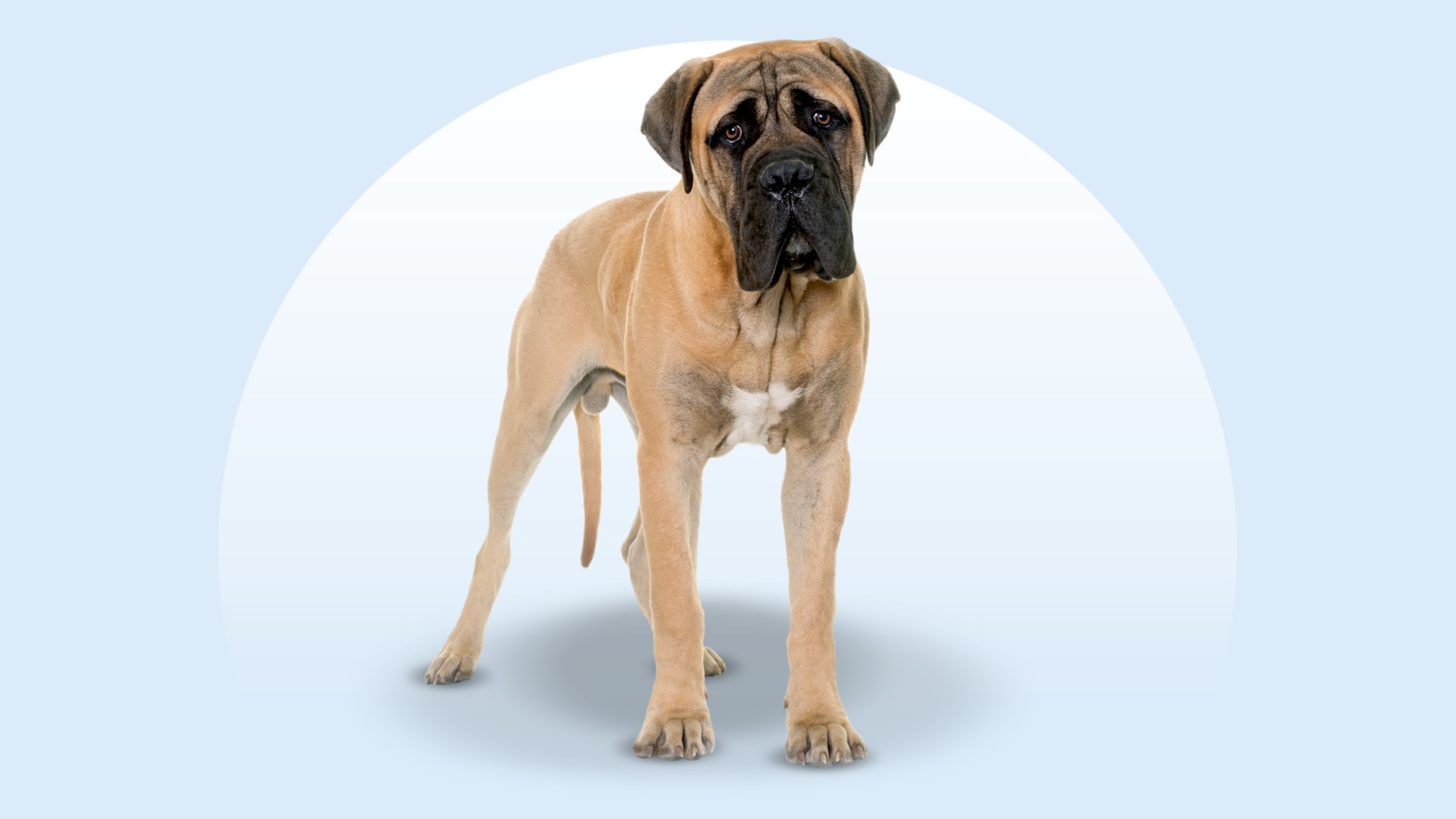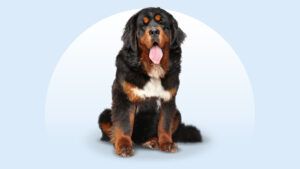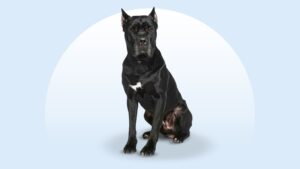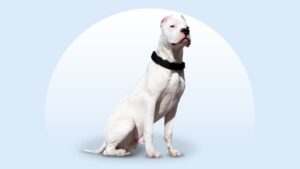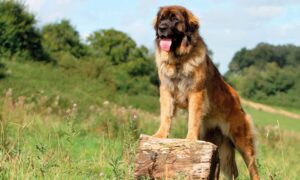Mastiff
Updated August 21, 2025
Mastiff
Updated August 21, 2025
Mastiffs are gentle giants with adorable jowls, and they’d love to be your best friend. With their calm manner, kind heart, and dignified air, they’re looking for chill pet parents who’ll give them the love they deserve. (Just make sure you can handle a bit of drool.)
Dignified, Easygoing, Good-Hearted
120–230 pounds
27.5 inches and up
6–10 years
Fawn, Apricot, Brindle
The Mastiff, commonly called the English Mastiff, is the giant in a fairy tale who’s trying to convince everyone they’re really quite lovely. You might be intimidated by their larger-than-life size, but at their core, these kind-hearted pups have a courageous soul and a loyal mindset.
Sure, they might be the size of a small bear and drool enough to fill a river basin, but surely you can overlook those adorable quirks. In return, you’ll have a faithful best friend and a gentle companion.
Mastiff Characteristics
Mastiff Appearance
Mastiff dogs have a big frame and a kind heart. With a large head framed by long, soft ears and expressive wrinkles, this pup moves slowly but with purpose. Mastiffs have quirky, droopy jowls that define their look.
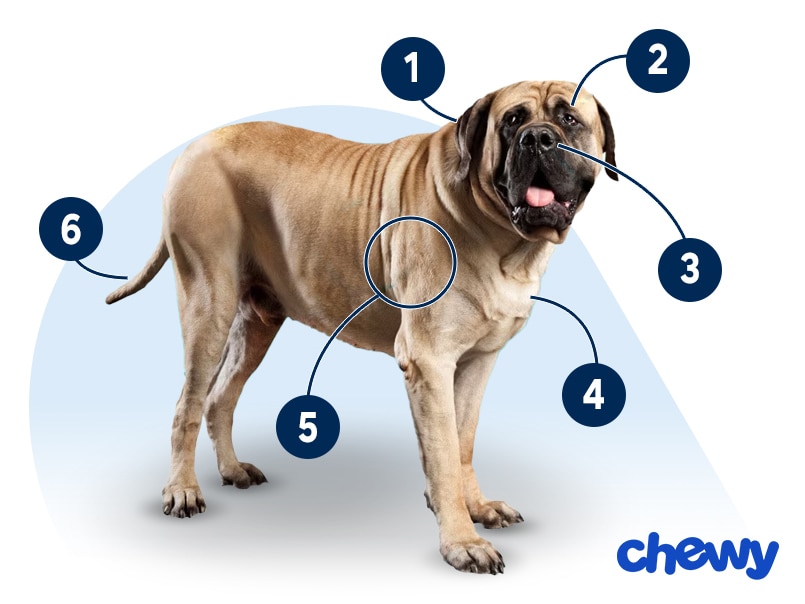
- Ears
A Mastiff’s ears are small compared to their very large head. They’re also V-shaped with rounded tips.
- Eyes
Their eyes are wide-set, medium in size, and brown in color.
- Nose
A Mastiff's muzzle is half the length of their head, and their nose is broad and dark in color.
- Coat Length
Mastiffs are short-coated pups with a dense outer coat and a short, close-lying undercoat.
- Coat Color
English Mastiff colors include fawn, apricot, or brindle (subtle tiger stripes).
- Tail
A Mastiff’s tail is wide at the base and tapers toward the end; it might hang straight or curve slightly upward.
Mastiff Temperament
The largest Mastiff ever recorded was 343 pounds, but yours likely won’t be that overwhelming; the average Mastiff size anywhere between 120 and 230 pounds.
That’s still a giant dog, and while taking in a pup that size might seem intense, personality-wise these canines are remarkably laid-back. Loyal and courageous, English Mastiffs have big hearts and a gentleness that makes them excellent family dogs.
With proper socialization, Mastiffs get along well with children, and chances are kids will love them back just as much. You’ll need to keep an eye on all Mastiff-kiddo interactions to make sure your dog doesn’t accidentally knock down a child.
The same goes for other animals, especially small dogs who might accidentally be stepped on or squished by the much-bigger Mastiff.
They’re friendly, low-key dogs who don’t exactly have a ton of built-up energy (and therefore don’t demand a lot of exercise). In fact, an English Mastiff’s ideal pet parent would be a calm soul who’s just like them.
How to Care for a Mastiff
English Mastiffs have moderate exercise needs and a coat that’s easy to brush. But know that this pup drools a lot and needs a pet parent who’s OK with handling some slobber.
Grooming
Training
Diet
Exercise
Environment
Mastiff Health
The typical English Mastiff lifespan is just 6–10 years, as big dogs live shorter lives than small dogs. Here are some health issues to be aware of.
- Bloat and gastric dilatation-volvulus (GDV): Mastiffs, like many large breeds with deep chests, are prone to a life-threatening condition called bloat that occurs when the stomach distends with air and/or food. Gastric dilatation-volvulus is a serious complication of bloat in which the stomach twists on itself, cutting off blood supply to the organs. If you notice symptoms of abdominal distension, restlessness, and dry heaving, go to the vet immediately.
- Degenerative myelopathy (DM): This is a neurological disease that affects the spinal cord. Degenerative myelopathy in dogs slowly weakens, then paralyzes the back legs, and it causes problems with breathing, vocalizing, and eating. There is no treatment to reverse it, but physical therapy may help.
- Elbow and hip dysplasia: Elbow and hip dysplasia are genetic conditions in which the joints don’t align well and become loose. Signs include limping, and treatment might involve weight loss, reduced activity, joint supplements, physical therapy, pain meds, or even surgery.
- Epilepsy: Epilepsy is a seizure disorder that typically starts in Mastiffs between 6 months and 5 years of age. While it can be managed with medication, there’s no cure. That said, dogs with epilepsy can still lead a long and happy life.
- Heart disease: Dilated cardiomyopathy (DCM), or an enlarged heart, is one of the most common heart diseases in large-breed dogs. When the heart enlarges, it results in thin and weakened heart muscles that can lead to heart failure.
- Progressive retinal atrophy (PRA): PRA leads to blindness in dogs, and while there is no cure, pups who lose their eyesight tend to adapt well and can still live full, happy lives.
Mastiff History
The English Mastiff, commonly known as the Mastiff or even the Old English Mastiff, has a proud lineage, all descending from their mastiff-type ancestor who hunted lions, according to The Mastiff Club of America.
It’s important to note this ancestor dog was not the same as the Mastiff we know today, and quite a few breeds are thought to be descended from them, including the Bullmastiff, Neapolitan Mastiff, and the Tibetan Mastiff.
The mastiff-type dog can likely trace heritage back to ancient Greece, China, Rome (with accolades from Julius Caesar himself), and Egypt, where hieroglyphics of these pups showed up as early as 3000 BCE. Unfortunately, in those times, these canines were likely to be brought into battle or used as guardian dogs.
However, they persevered, and Geoffrey Chaucer remarked upon their impressive size and strength in his 14th-century work, “The Canterbury Tales.” Today, though, Mastiffs are calm, kind family dogs more likely to be found snoozing than chasing away enemies.
English Mastiff puppies tend to be about $2,500–$3,500. If you choose this route, pick a responsible breeder.
You can also adopt a Mastiff, as there are many waiting for their forever homes. Look for English Mastiff rescues, like the Great Plains Mastiff Rescue, keep an eye out at your local animal shelter, or search Chewy’s database of adoptable dogs in your area.
